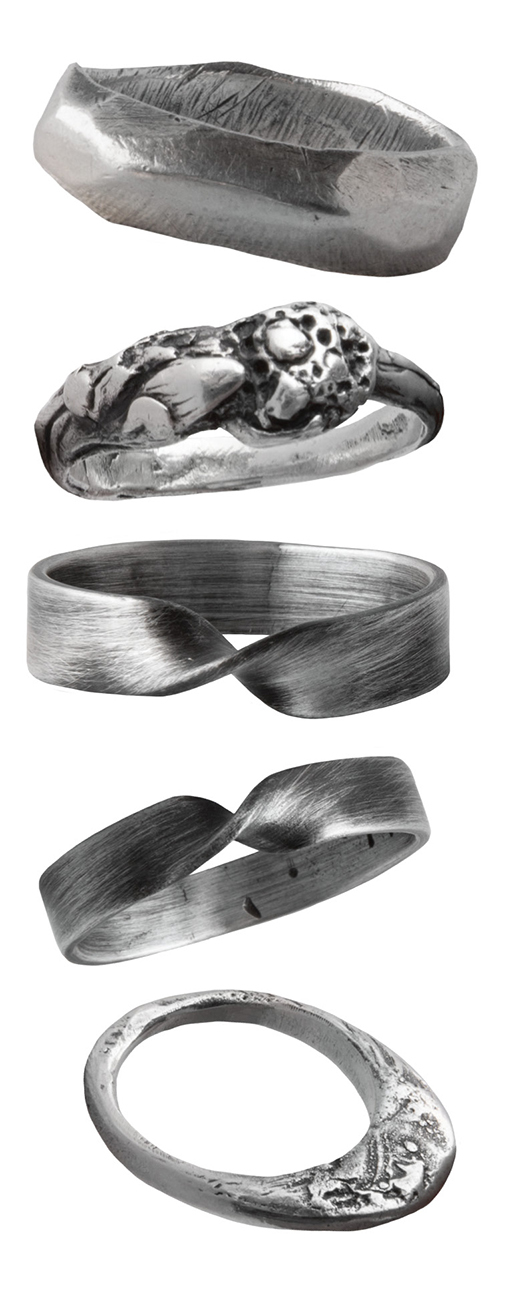One of the strangest rings he’s made was a spiral silver ring. “I thought that it was a really risky design for an engagement ring,” says Curoe. “I wasn’t even sure it would work, but he (the customer) was very adamant about it.” In the end, Curoe designed a ring that did not inter-connect and was accented by a moonstone at the top – a touch the customer wanted due to the moonstone’s symbolism for lovers.
A former Edmontonian and current Saskatchewan-based independent jeweller, Jeanie Andronyk, says that she’s witnessed the rejection of common rings for years – especially in Edmonton. “I think a reason people come to me is because my jewellery is not traditional. That in itself is enough sometimes. My stuff is a little weird and a little sculptural,” says Andronyk. “I draw heavy inspiration from science fiction, robotics, futurology and transhumanism. So the people drawn to me are also drawn to that. The challenge for me is translating that sensibility into a wedding band that is wearable.”
One of Andronyk’s customers, Jim Johansson, sports a ring that looks to be a sculpted piece of metal indicative of ’70s sci-fi or some organically formed silver sculpture rather than a sleek wedding band. And it was the abstract nature of her rings that drew Johansson to Andronyk in the first place. “We pointed to something she had already done and said: ‘We want something like that,'” says Johansson.
Originally, he and his wife shared a matching wedding ring set, though, in the long-run, his wife commissioned Andronyk for a replacement wedding band that was “even more abstract than mine,” says Johansson. They opted for a sterling silver ring that looks more monolithic than angular.
In some cases, knowing where materials come from (blood diamonds being the fiercest of a few consumers’ fears) causes the newest generation of brides- and grooms-to-be to cast aside material bands altogether. For Andrea Layton and her husband, Matt Layton, it was one of the factors for having their ring fingers tattooed instead. “For myself, there was definitely a social aspect to it,” says Andrea. “I’m pretty sure no one’s blood went into this ink.”
